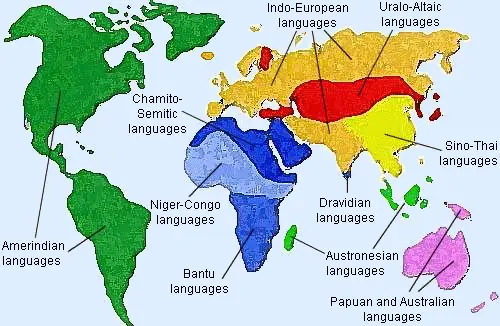 |
| From FreeLang.net |
Scientists can trace human migration over time by looking at genetic diversity in various populations. The longer people have been in a region, the more chances their DNA has had for change and mutation. In Africa, the cradle of mankind, genetics and DNA are highly variable. Conversely, aboriginal Australians and native Hawaiians have very little variation from one person's DNA to the next. The shades of difference between those extremes tell a lot about how long people have inhabited different parts of the world and our migratory patterns.
Turns out, language may follow a similar pattern.
It has long been believed that you can't trace languages back very far. The Proto-Indo-European language family is more intensively studied than any other, but even it only goes back about 9,000 years. A blink of an eye in evolutionary terms. Today's article talks about a recent study that points to a potential "language DNA" that can be traced: Phonemes. Phonemes are the simplest element of language: Consonants, vowels, and tones. Dr. Quentin D. Atkinson of the University of Auckland noticed that languages in Africa (particularly southern Africa) have over 100 phonemes, while Hawaiian only has 13. Variations between those extremes mimic human migratory patterns, which is meaningful because that should be the case. The brilliance of this discovery, at least in my opinion, lies in its simplicity. It makes sense that if we can trace language to its ancient history, the traceable parts would be the most basic.
How did linguists make such a discovery after years of overlooking such a simple theory? The didn't, Dr. Atkinson is a biologist.
Dr. Atkinson's findings are promising, but not conclusive. I suggest you read the article if you can (it's NYTimes.com). Tip: If you don't want to pay for NYTimes.com you can still read 20 articles per month for free. If you've reached your quota for the month, bookmark this one and read it later. It's a good one!
No comments:
Post a Comment